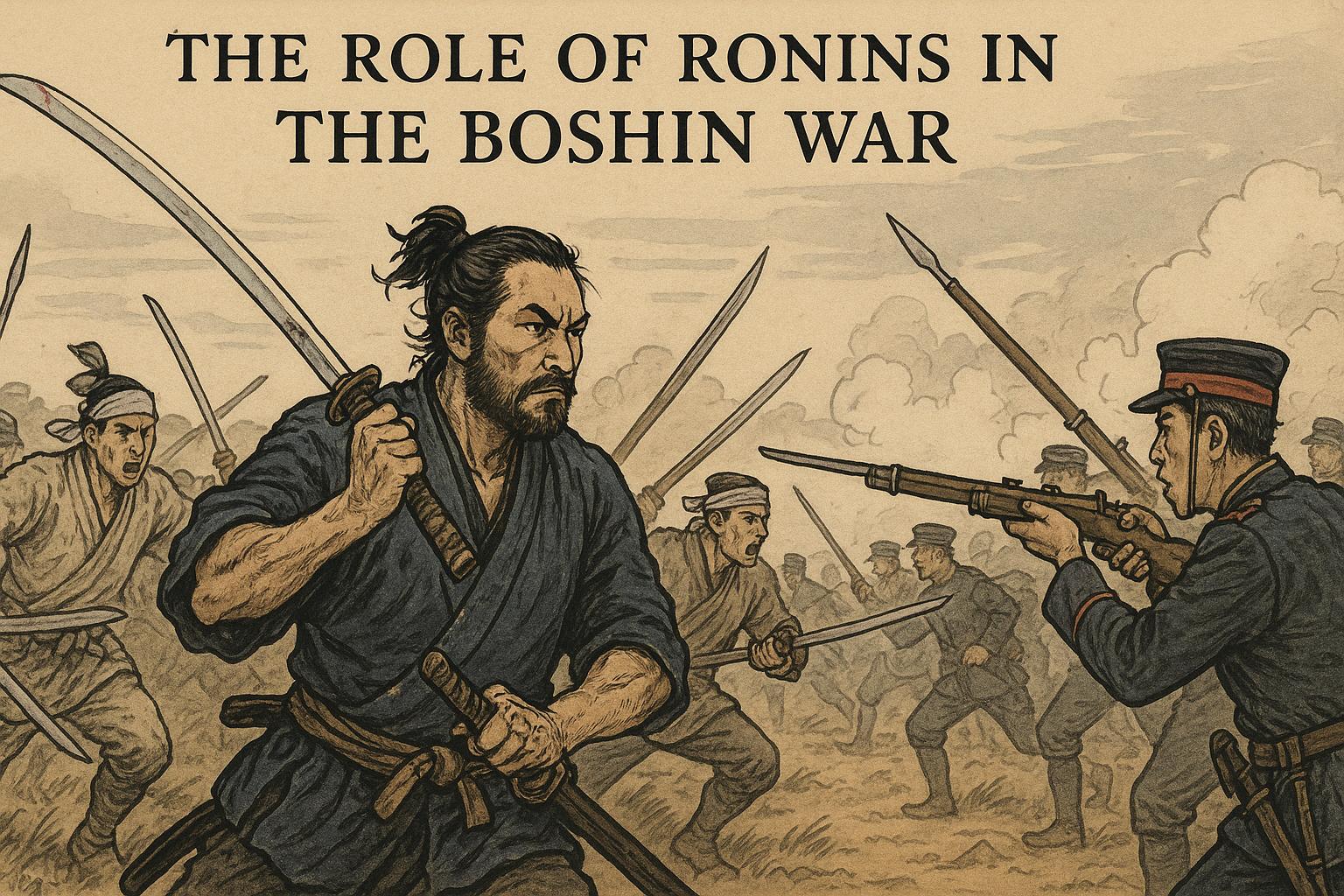The Role of Ronins in the Boshin War
The Boshin War, occurring from 1868 to 1869, stands as a significant turning point in Japan’s history. This conflict not only ended the Tokugawa shogunate’s long reign but also laid the groundwork for the subsequent Meiji Restoration. The war featured the collision of two principal factions: the Tokugawa shogunate’s loyalists and those advocating for restoring imperial power. Amidst these factions were the intriguing figures of the ronin—samurai without masters, navigating through a dynamic and transitional period for their nation.
Background of Ronins
The term “ronin” refers to samurai who found themselves without a lord due to varied circumstances. These situations included the death of their master, a downfall of their clan, or changes within the socio-political landscape that left them unattached. During the protracted peace of the Tokugawa shogunate era, the traditional role of the samurai as warriors diminished. Consequently, many samurai became ronins, facing not only economic hardship but also a social stigma due to their newfound status.
The societal perception of ronins was complex. They were often viewed with suspicion due to their lack of allegiance to a particular lord or clan, which traditionally formed the foundation of the samurai’s identity. Their marginalized position drove many to seek out roles that would allow them to reclaim their loss of status and purpose. This quest for redefined roles made them pivotal participants in the socio-political upheavals of their time.
Participation in the Boshin War
The ronins’ participation in the Boshin War was driven by a myriad of motivations. Some were propelled by an undying loyalty to their former lords and the feudalistic ideals of the Tokugawa era. Others were stirred by the promise of political change and the opportunities posed by the shifting power dynamics. The immediate need for sustenance and employment also played significant roles in their decision to join the conflict.
The contributions of ronins were sought after by both sides of the war. Their military background and combat expertise were invaluable assets. The Imperial forces, advocating for a return to imperial rule and modernization, attracted many ronins who saw this as a pathway to a revitalized society. Conversely, a considerable number also sided with the Tokugawa shogunate, a testament to their allegiance to the status quo that had long established their class’s hierarchy and order.
Influence on Military Strategies
Experienced in the art of warfare, ronins introduced critical strategic advantages in battles during the Boshin War. Their adeptness in traditional samurai combat brought a seasoned perspective to the military strategies employed by both factions. Ronins often excelled in guerrilla warfare tactics, utilizing their knowledge of local landscapes to orchestrate both defensive stands and offensive maneuvers. In many instances, these warriors turned the tide of battles through their tactical ingenuity, contributing to both victories and retreats in the swiftly changing warfront conditions.
Their deep understanding of warfare underscored the blending of traditional battle tactics with new strategies emerging from the Meiji influences. The ronins’ presence in the conflict added layers of complexity to the military engagements, marking a period of significant military evolution.
Social and Political Implications
The ronins’ active involvement had profound social and political ramifications during and after the war. Their participation mirrored the fluid and unsettled dynamics of a Japanese society wrestling with its identity amidst modernization. The aftermath of the Boshin War saw many ronins transition into roles within the evolving military apparatus of the Meiji state. Others adapted to the transformative social structures that emerged, as Japan modernized and Westernized.
Their participation in the Boshin War served as a bridge between Japan’s feudal past and its modern future, highlighting the shifts in social class dynamics and the questioning of longstanding hierarchies. The era signified a redefinition of roles: no longer merely warriors of noblemen, many ronins became catalysts for reform and contributors to nation-building efforts.
Conclusion
The ronins’ involvement in the Boshin War intricately highlights the multifaceted changes occurring in Japan during this critical phase. Although initially seen as masterless and marginalized, these samurai played a substantial role in shaping the country’s trajectory towards modernization. Their contributions in combat and beyond underscored their significance during a time of significant transformation.
Moreover, the legacy of the ronins continues to resonate as a testament to their impact during Japan’s complex journey from a deeply rooted feudal society to a burgeoning modern state. The Boshin War encapsulates this transitional narrative, with ronins embodying the tension and potential within a society poised for change.
In contemplating the ronins of the Boshin War, their story remains an essential chapter in understanding Japan’s historical and cultural evolution. They served not only as warriors in the battles of a war-torn era but also as symbols of resilience and adaptability amid shifting paradigms, leaving an indelible mark on the tapestry of Japanese history.

